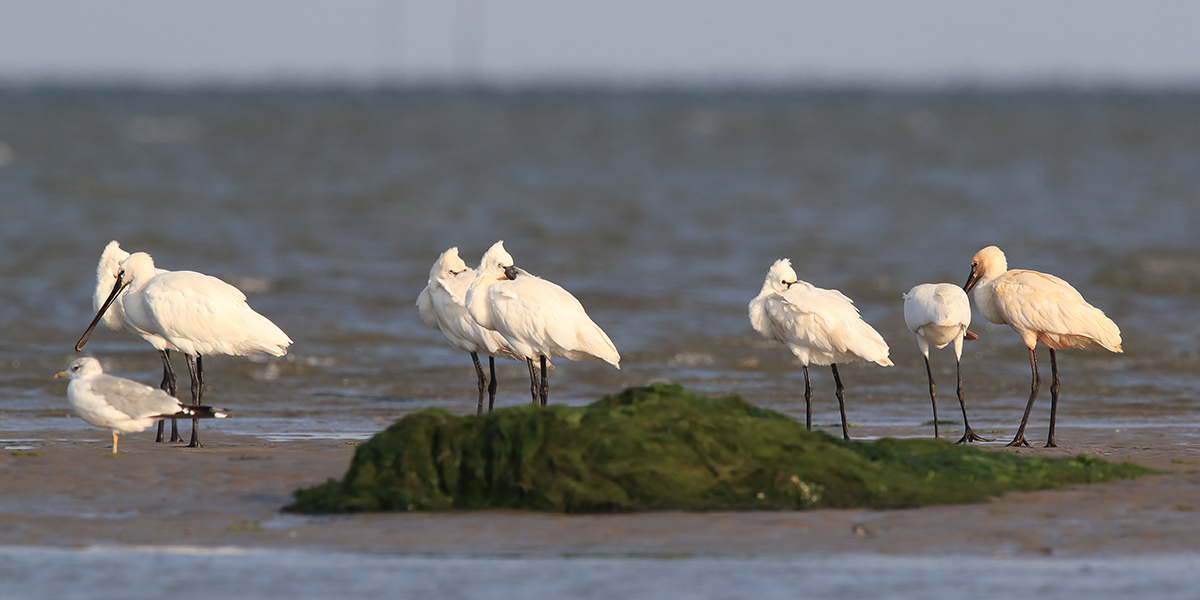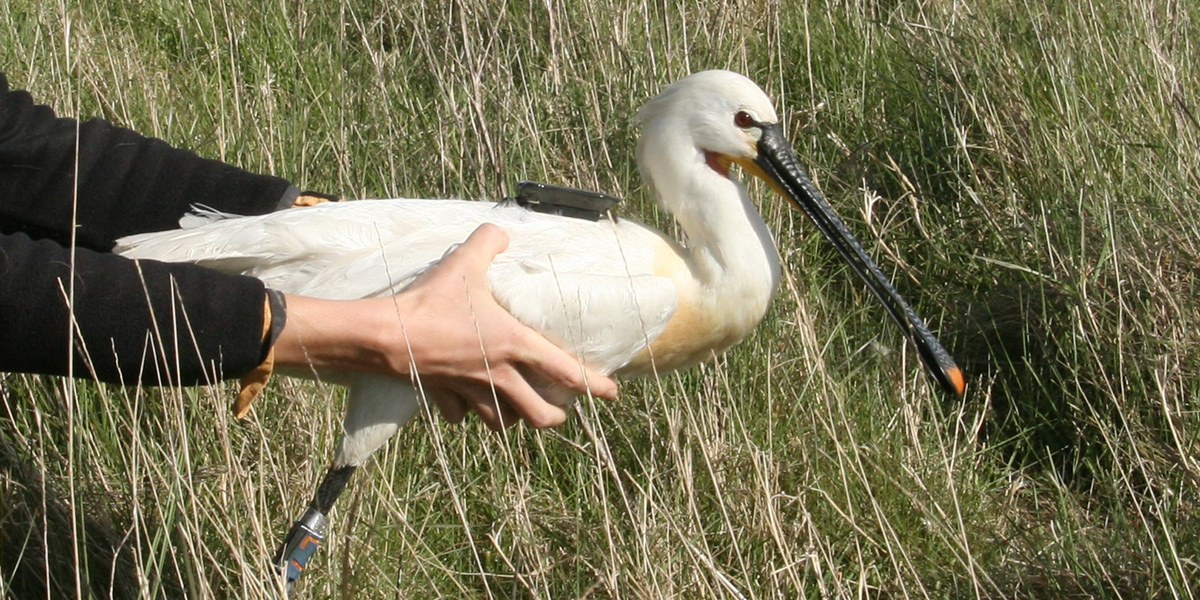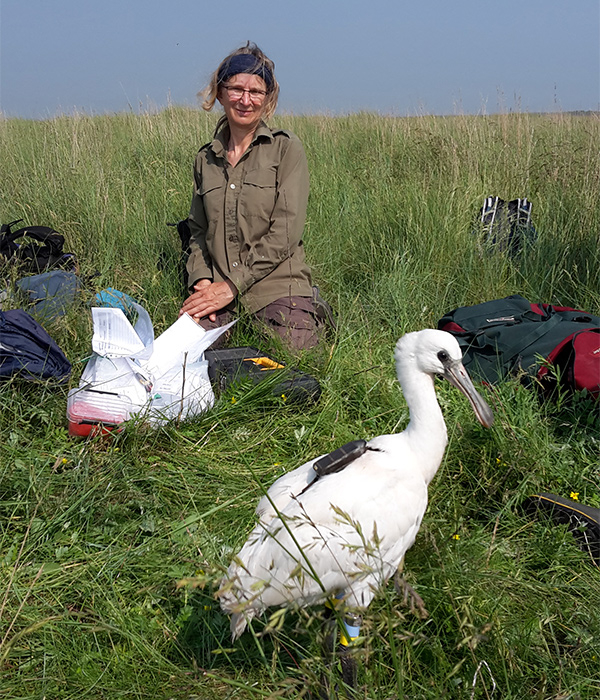Eurasian Spoonbills monitoring program
The research program on spoonbills combines long-term demographic time-series with life-time tracking of young and adults from the breeding colonies in The Netherlands in collaboration with Willem Bouten (University of Amsterdam – UvA Bird Tracking System). Our latest GPS trackers even send SMS messages, which is a tremendous help to locate birds that are beyond the reach of the antenna network.

Following the spoonbills
Every year, on all Dutch Wadden Sea islands, spoonbills are colour-ringed, measured and a blood sample is taken for sex determination and isotopes analyses. Isotopes help us to find out what the diet of spoonbills is. Also in additional colonies on the Dutch mainland, Spoonbills are colour-ringed. Re-sightings by hundreds of volunteers all along the flyway show their migration routes and wintering sites. Since 2012, we have issued UVA-bits GPS-loggers to adult and juvenile spoonbills to follow their whereabouts while breeding, feeding and migrating.
GPS tags
What Eurasian spoonbills do and learn in the first years after they are born determines what routines they will have as adults. To see how they establish their habits, we give young spoonbills a GPS-tag before they leave the colony on Schiermonnikoog in The Netherlands. The GPS-tag regularly sends SMS messages, so we generally know where the birds are, but the detailed information on location and movements that is stored in the tag can only be downloaded if a bird is close to one of our mobile antenna stations.
Since some of these young birds may never come back to the antenna stations in The Netherlands we follow them. When we know that the youngsters are 'reliably' present at a wintering location we travel to this location, to download the detailed history of their wanderings and daily activities.
Impression of the work
Recently a team of RUG/NIOZ researchers went to Spain and Portugal for targeting young Eurasian spoonbills. Petra de Goeij, (RUG) member of Team Piersma wrote a blog to give an impression of the work.
In June 2019, a total of twenty young spoonbills from France and The Netherlands were equipped with an Ornitela transmitter. In August 2020 we equipped 1 spoonbill from France and 6 spoonbills from The Netherlands. They can now be followed real-time via GPS positions. Select one or more spoonbills to find out where they are at this moment and keep on track via de blogs of Tamar Lok and her team.
Team


Veni grant 2018
This project is awarded by The Netherlands Organisation for Scientific Research (NWO) to stimulate further investigation on the development of migration routes of spoonbills. A better understanding of the importance of genes and environment in shaping migration routes is of key importance to predict how fast animals will be able to adapt their migration routes to changes in their environment.
